
The Centennial International Exhibition, officially the International Exhibition of Arts, Manufactures, and Products of the Soil and Mine, was held in Philadelphia from May 10 to November 10, 1876. It was the first official world's fair to be held in the United States, and coincided with the centennial anniversary of the Declaration of Independence's adoption in Philadelphia on July 4, 1776.
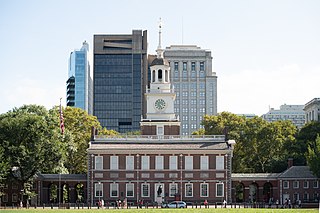
Independence Hall is a historic civic building in Philadelphia, where both the United States Declaration of Independence and the United States Constitution were debated and adopted by America's Founding Fathers. The structure forms the centerpiece of the Independence National Historical Park. Independence Hall was named to the National Register of Historic Places in 1966 and as a World Heritage Site in 1979.

During the American Civil War, the United States (U.S.) was referred to as the Union, also known colloquially as the North, after eleven Southern slave states seceded to form the Confederate States of America (CSA), which was called the Confederacy, also known as the South. The name the "Union" arose from the declared goal of the United States, led by President Abraham Lincoln, of preserving the United States as a constitutional union.
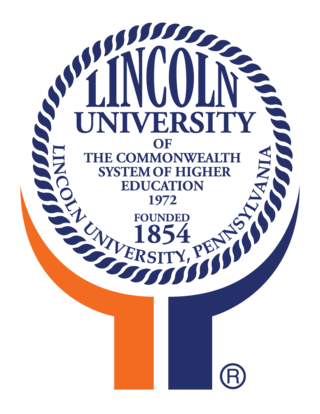
Lincoln University (LU) is a public state-related historically black university (HBCU) near Oxford, Pennsylvania. Founded as the private Ashmun Institute in 1854, it has been a public institution since 1972 and is the second HBCU in the state, after Cheyney University of Pennsylvania. Lincoln is also recognized as the first college-degree granting HBCU in the country. Its main campus is located on 422 acres near the town of Oxford in southern Chester County, Pennsylvania. The university has a second location in the University City area of Philadelphia. Lincoln University provides undergraduate and graduate coursework to approximately 2,000 students. It is a member-school of the Thurgood Marshall College Fund.
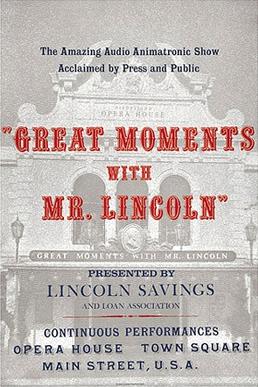
Great Moments with Mr. Lincoln is a stage show featuring an Audio-Animatronic representation of U.S. President Abraham Lincoln, best known for being presented at Disneyland since 1965. It was originally showcased as the prime feature of the State of Illinois Pavilion at the 1964 New York World's Fair. One year after its debut at the World's Fair, the show opened at Disneyland, where it has undergone several changes and periods of hiatus over the years. Today Great Moments with Mr. Lincoln is an element of the Disneyland attraction The Disneyland Story presenting Great Moments with Mr. Lincoln, which opened in 2009.
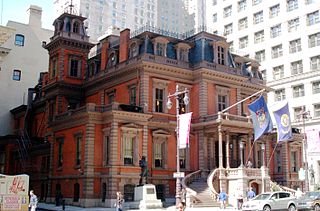
The Union Leagues were quasi-secretive men's clubs established separately, starting in 1862, and continuing throughout the Civil War (1861–1865). The oldest Union League of America council member, an organization originally called "The League of Union Men", was formed in June 1862 in Pekin, Illinois. Four months later, on November 22, 1862, the Union League of Philadelphia, the first of the elite eastern Leagues and the second oldest ULA council member, was established.
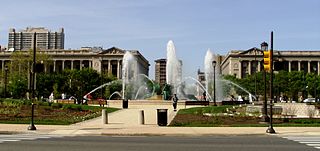
Logan Circle, also known as Logan Square, is an open-space park in Center City Philadelphia's northwest quadrant and one of the five original planned squares laid out on the city grid. The centerpiece of the park is the Logan Circle, a circular area centered on a large water feature, bounded by a traffic circle carrying 19th Street and the Benjamin Franklin Parkway with connections to 18th and 20th streets to the east and west and Race and Vine Streets to the south and north.

The United States Sanitary Commission (USSC) was a private relief agency created by federal legislation on June 18, 1861, to support sick and wounded soldiers of the United States Army during the American Civil War. It operated across the North, raised an estimated $25 million in Civil War era revenue and in-kind contributions to support the cause, and enlisted thousands of volunteers. The president was Henry Whitney Bellows, and Frederick Law Olmsted acted as executive secretary. It was modeled on the British Sanitary Commission, set up during the Crimean War (1853–1856), and from the British parliamentary report published after the Indian Rebellion of 1857.
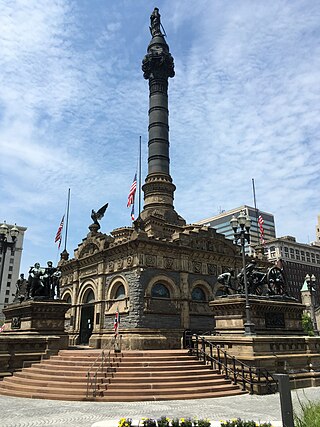
The Cuyahoga County Soldiers' and Sailors' Monument is a major Civil War monument in Cleveland, Ohio, honoring the more than 9,000 individuals from Cuyahoga County who served the Union throughout the war. It was dedicated on July 4, 1894, and is located on the southeast quadrant of Public Square in Downtown Cleveland. It was designed by architect and Civil War veteran Levi Scofield, who also created the monument's sculptures. The monument is regularly open to the public, free of charge.

During the American Civil War, Philadelphia was an important source of troops, money, weapons, medical care, and supplies for the Union.

One South Broad, also known as the Lincoln-Liberty Building or PNB Building, is a 28-story 472-foot (144 m) office tower in Center City, Philadelphia, Pennsylvania, United States. The art deco tower, designed by architect John Torrey Windrim as an annex for Wanamaker's department store, was completed in 1932. Wanamaker's Men's Store opened in the first seven floors of the building, which is located a block from Wanamaker's main store, and was intended to rival European department stores with its size and selection. In 1952, the Philadelphia National Bank (PNB) bought the building and converted it into offices and banking space. Until 2014, the building's bell tower was decorated on all four sides with PNB's initials in stainless steel 16 feet (4.9 m) tall. Wells Fargo is the main tenant, occupying almost half the building. The former banking space at street level was converted to retail and restaurant space in 2000.
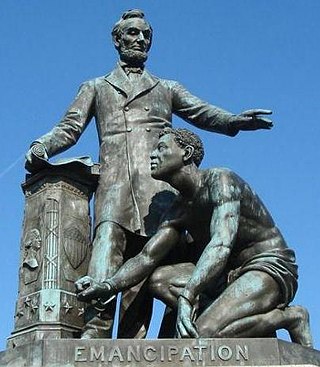
The Emancipation Memorial, also known as the Freedman's Memorial or the Emancipation Group is a monument in Lincoln Park in the Capitol Hill neighborhood of Washington, D.C. It was sometimes referred to as the "Lincoln Memorial" before the more prominent so-named memorial was dedicated in 1922.

Nevada's entry into statehood in the United States on October 31, 1864, in the midst of the American Civil War, was expedited by Union sympathizers in order to ensure the state's participation in the 1864 presidential election in support of President Abraham Lincoln. Thus Nevada became one of only two states admitted to the Union during the war and earned the nickname that appears on the Nevada state flag today: "Battle Born".
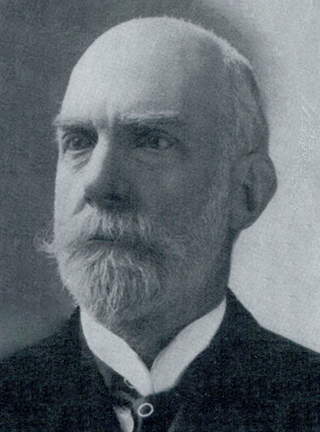
William Gibbons Preston was an American architect who practiced during the last third of the nineteenth century and in the first decade of the twentieth. Educated at Harvard University and the École des Beaux-Arts in Paris, he was active in Boston, New York, Rhode Island, Ohio, New Brunswick and Savannah, Georgia, where he was brought by George Johnson Baldwin to design the Chatham County courthouse. Preston stayed in Savannah for several years during which time designed the original Desoto Hotel, the Savannah Volunteer Guards Armory and 20 other distinguished public buildings and private homes. He began his professional career working for his father, the builder and architect Jonathan Preston (1801–1888), upon his return to the United States from the École in 1861, and was the sole practitioner in the office from the time his father retired c. 1875 until he took John Kahlmeyer as a partner in about 1885.
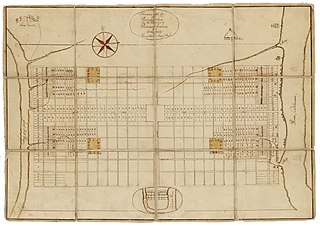
Vine Street is a major east-west street in Center City Philadelphia. It begins at the Delaware River and proceeds west to 20th Street, where it merges with the Benjamin Franklin Parkway.
Sarah "Sallie" Middleton Robbins Broadhead was a teacher, diarist, and resident of Gettysburg, Pennsylvania during the Battle of Gettysburg. She was the author of The Diary of a Lady of Gettysburg, Pennsylvania from June 15 to July 15, 1863, which is a primary historical source for what happened during the battle and especially how it impacted the residents of the borough. It has been called the most comprehensive written document on the role of women in the Civil War. Ken Burns quoted entries from the diary in his 1990 documentary series, The Civil War.

Valley of the Yosemite is a painting by the German American painter Albert Bierstadt that was completed in 1864. Initially associated with the Hudson River School, Bierstadt rose to prominence for his paintings of the Rocky Mountains, which established him as one of the best painters of the western American landscape. His later paintings of Yosemite were also received with critical acclaim and public praise.
The Metropolitan Fair was a public event organized in the Metropolitan City of New York by the United States Sanitary Commission to raise funds and supplies for the Union Army during the American Civil War, . The first Metropolitan Fair was announced by The New York Times on January 1, 1864, and to be held on March 28 of that year However, the event was postponed until April 4, and it resulted in the largest Sanitary Fair ever which raised over a million dollars for the Union cause.

Sanitary fairs were fund-raising events held in various cities on behalf of the United States Sanitary Commission to raise funds and supplies for the Union Army during the American Civil War. Established in 1863, the last major event was held in 1865 in Chicago. From the outset of the USSC, many local groups sponsored fundraising events to benefit the Commission. As the civil war progressed, these became larger and more elaborate. Organizing these Sanitary Fairs offered ways for local communities to participate directly in supporting the war effort of the nation.

Northwestern Sanitary Fair was a fund-raising event of the United States Sanitary Commission (USSC), held in Chicago, Illinois. It opened on May 30 and closed on June 21, 1865. It was the second time such a Sanitary Fair was held in the city, the first time being in 1863. Although the civil war had come to a sudden close, there was still great need of funds to care for the disabled of the Union Army.


















